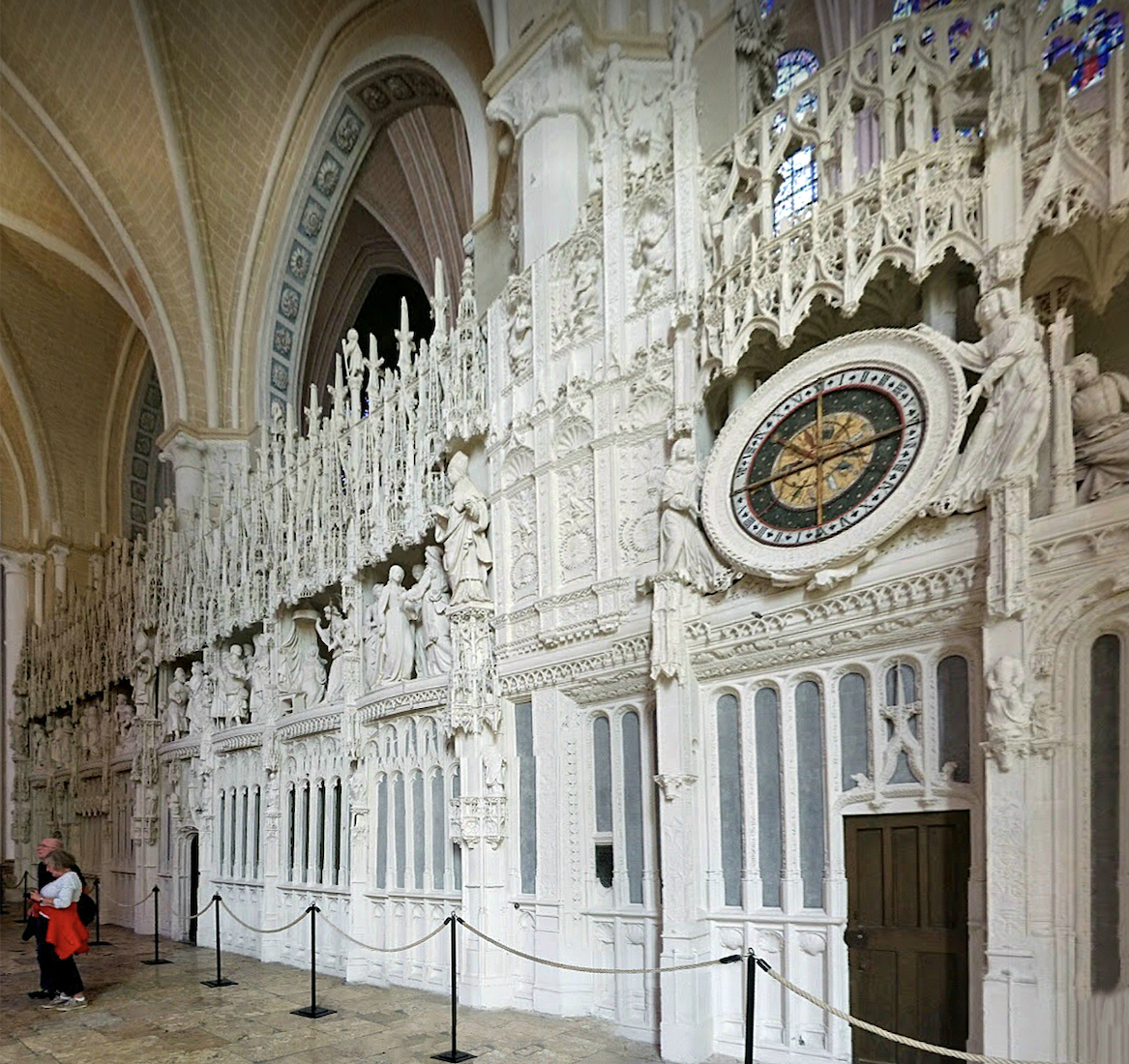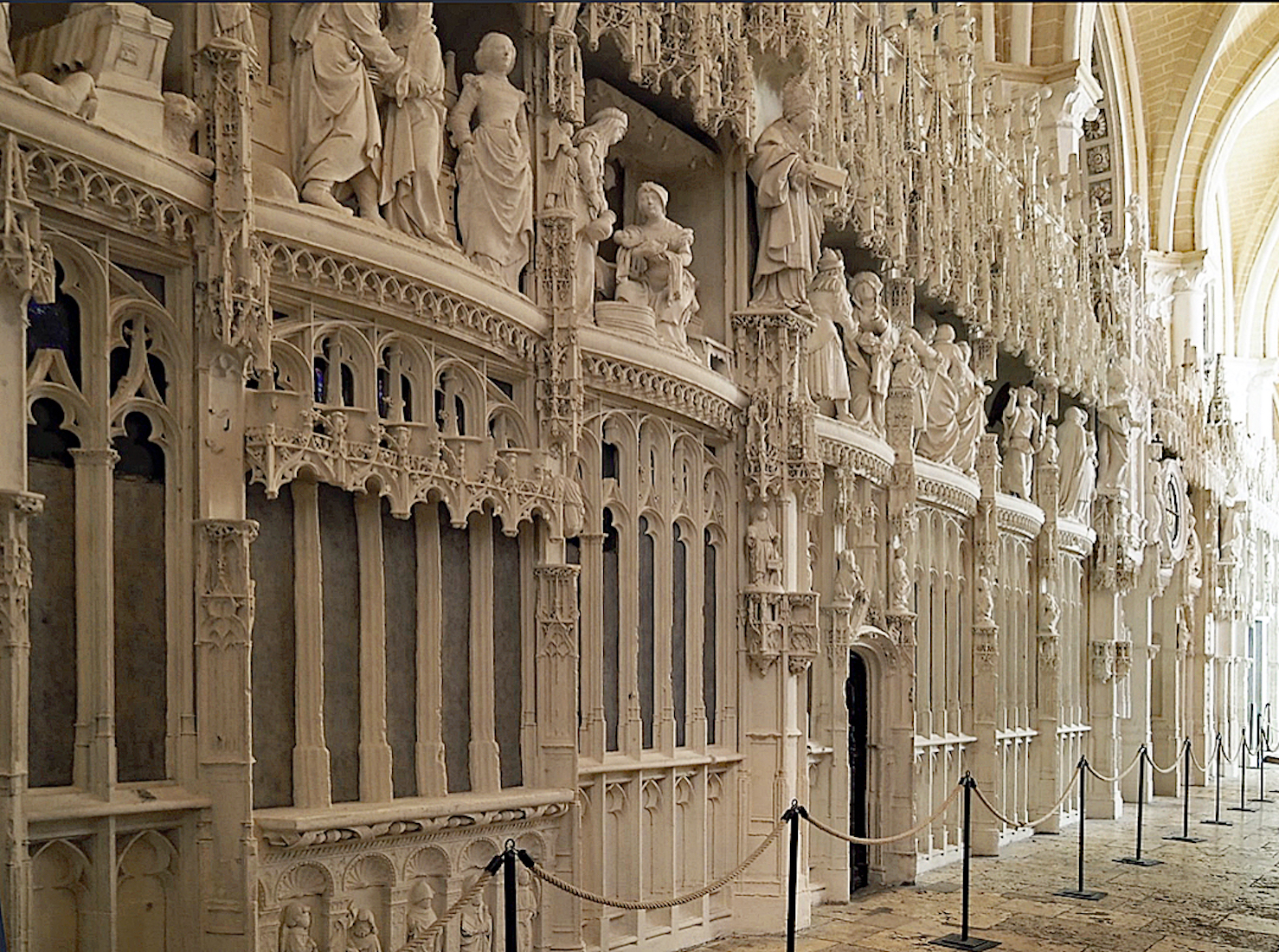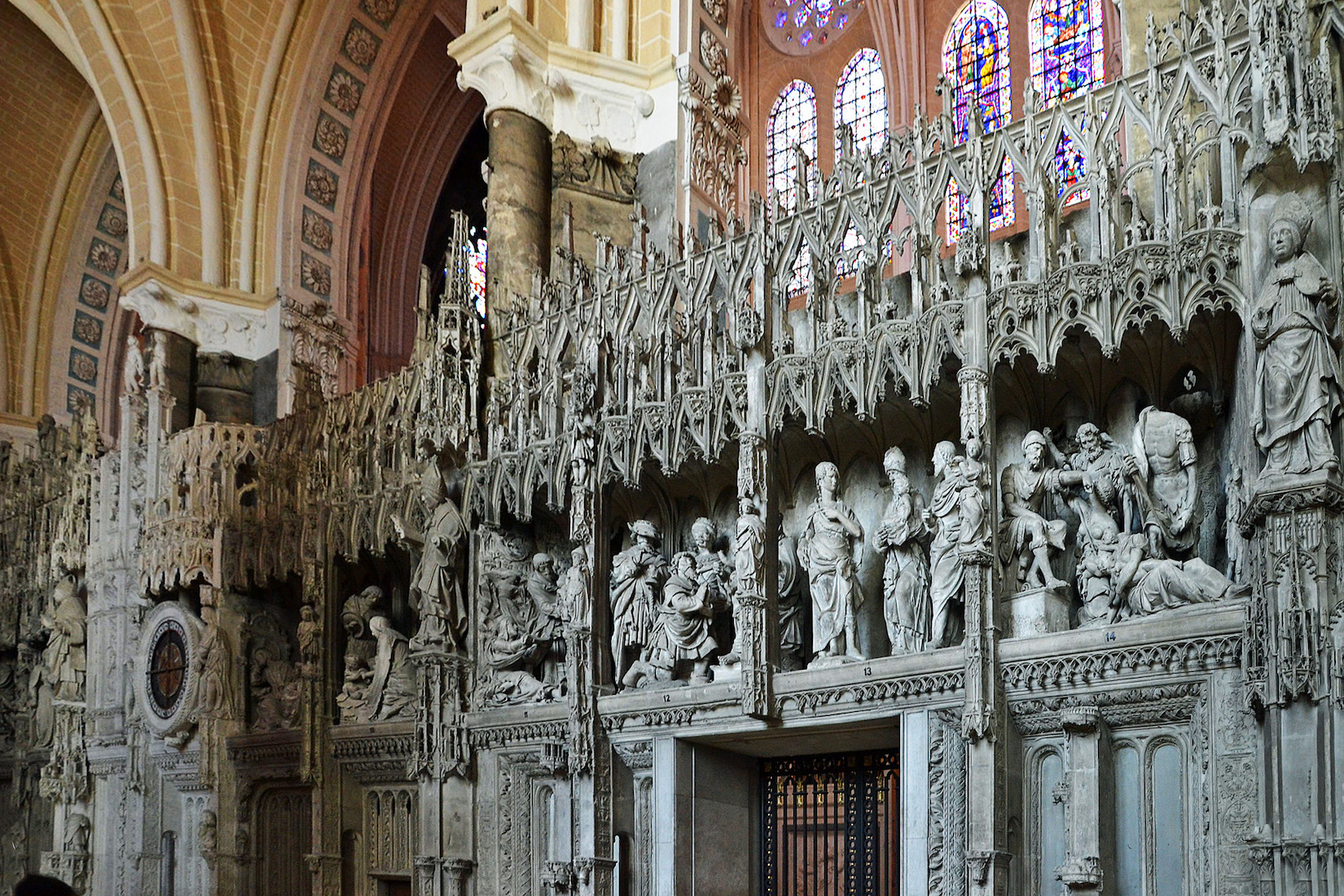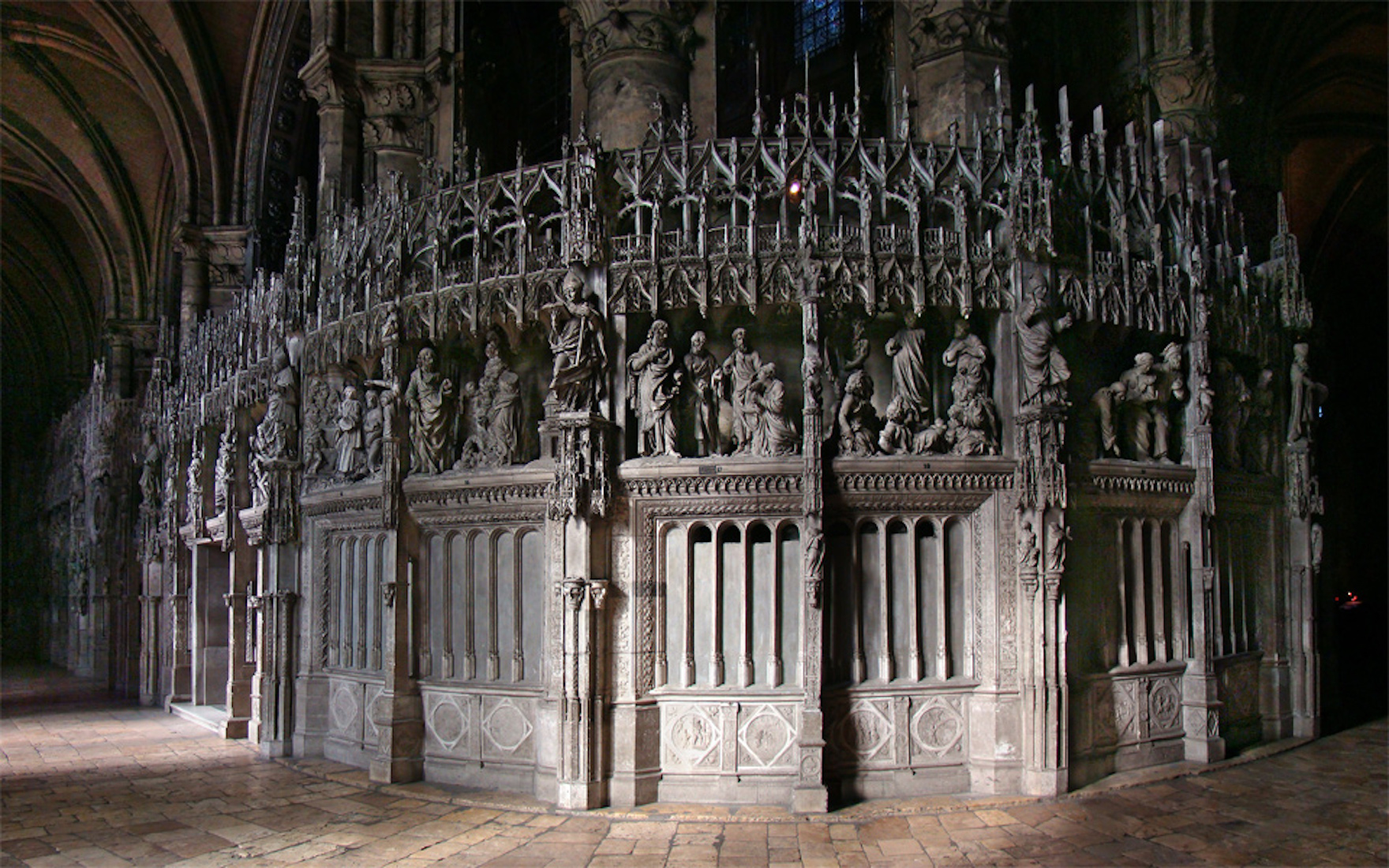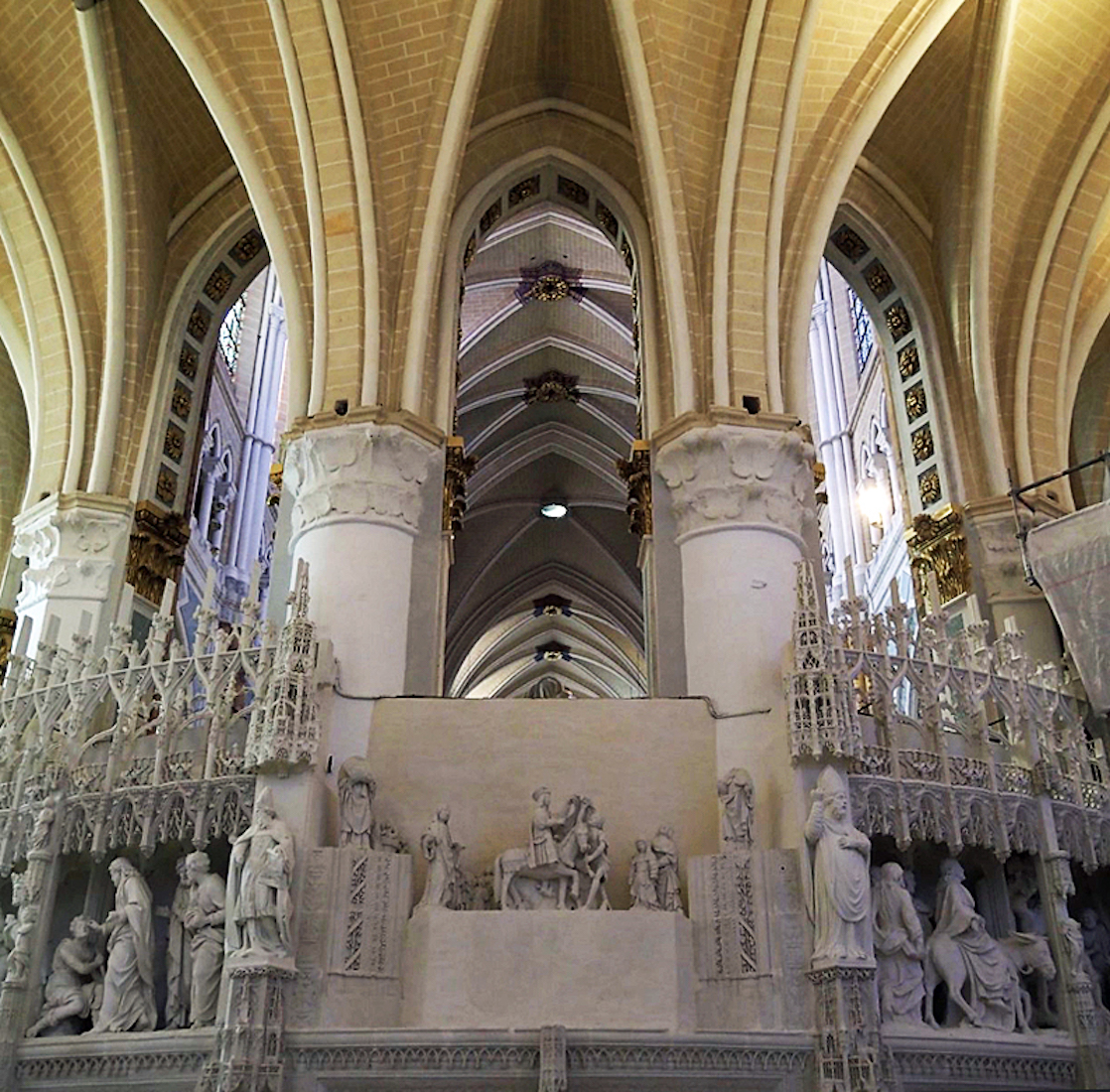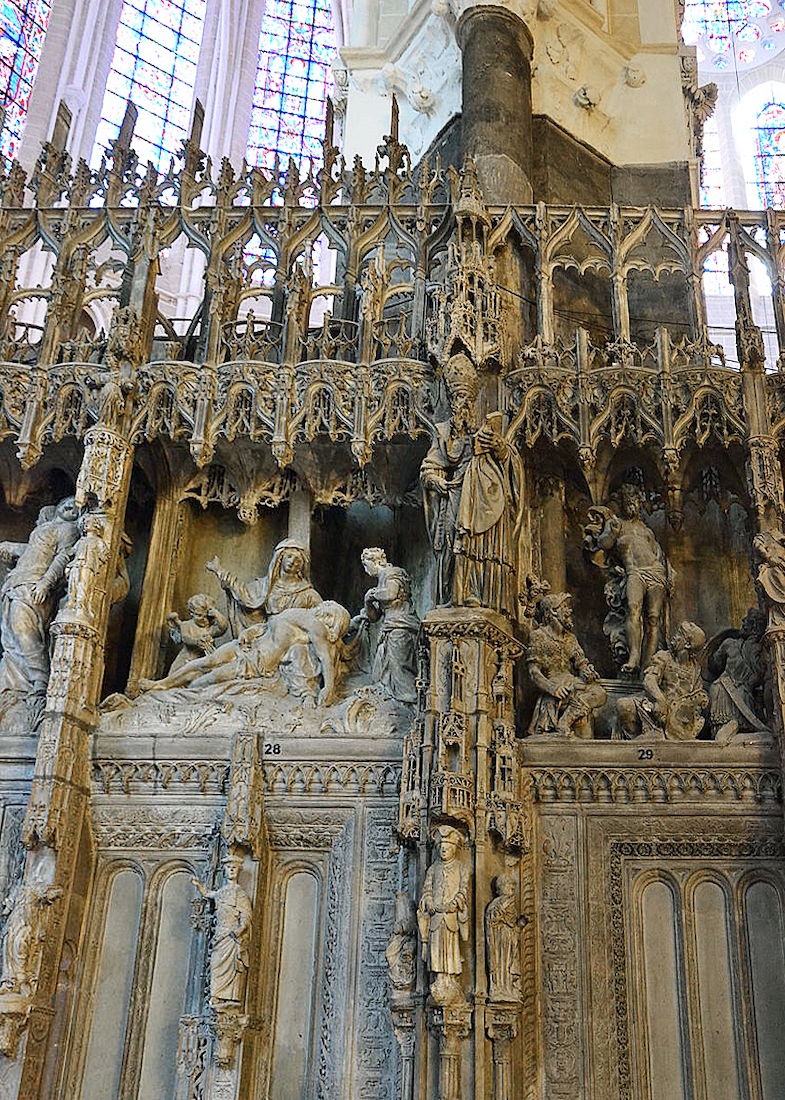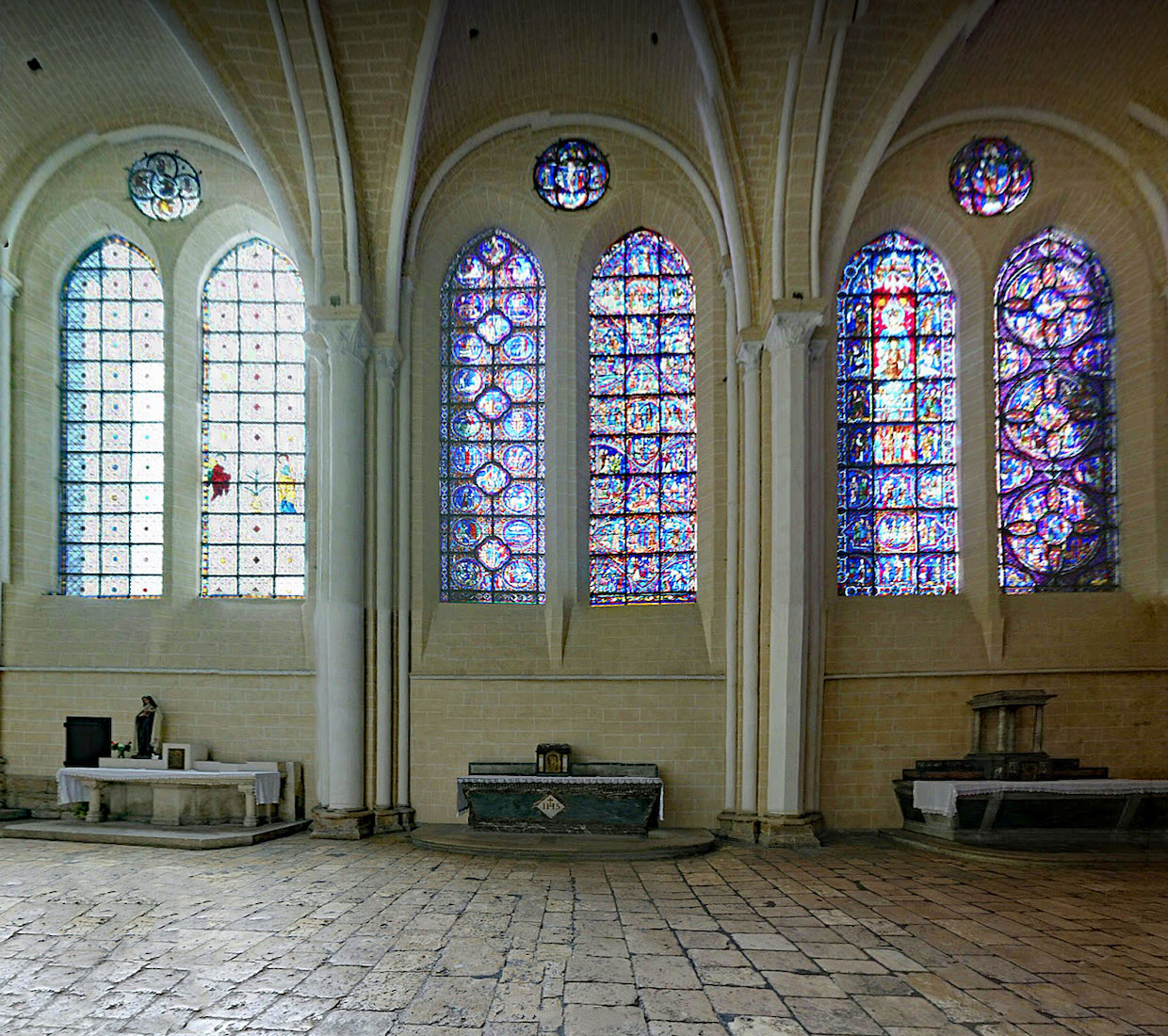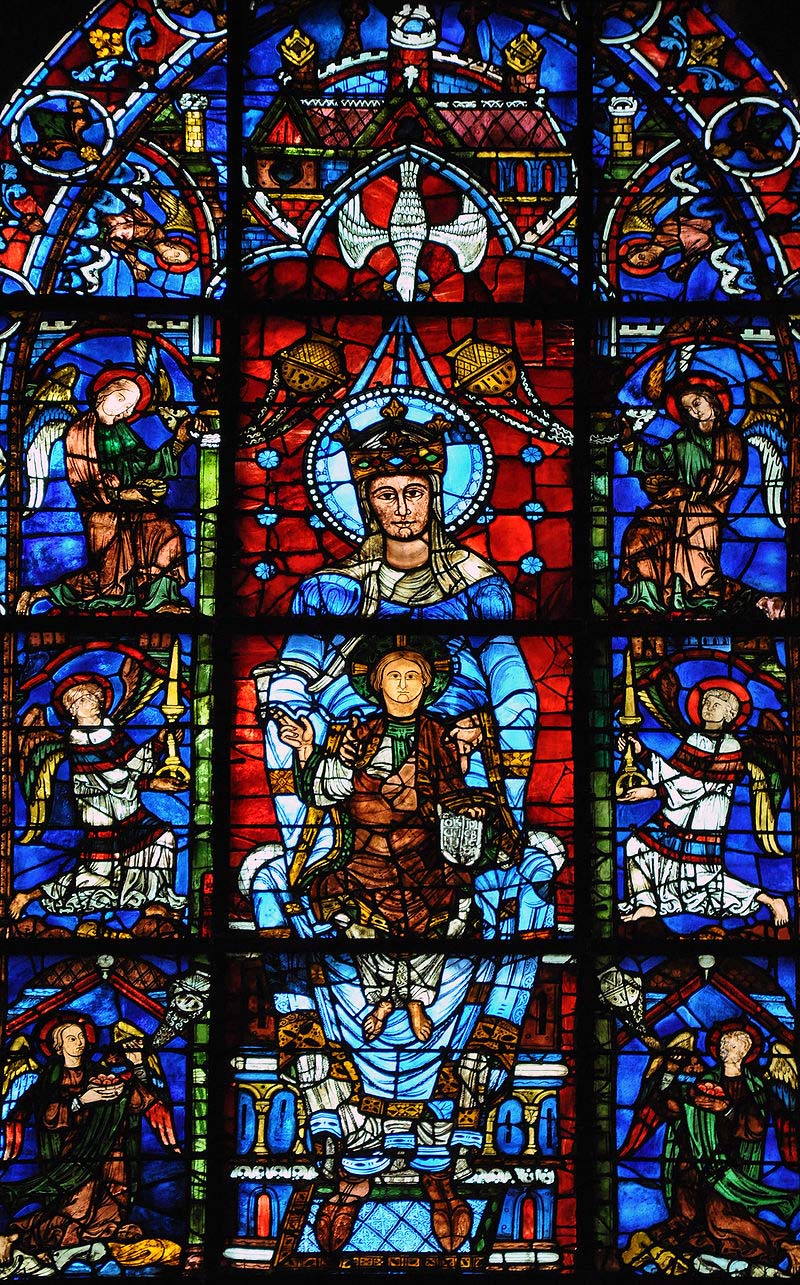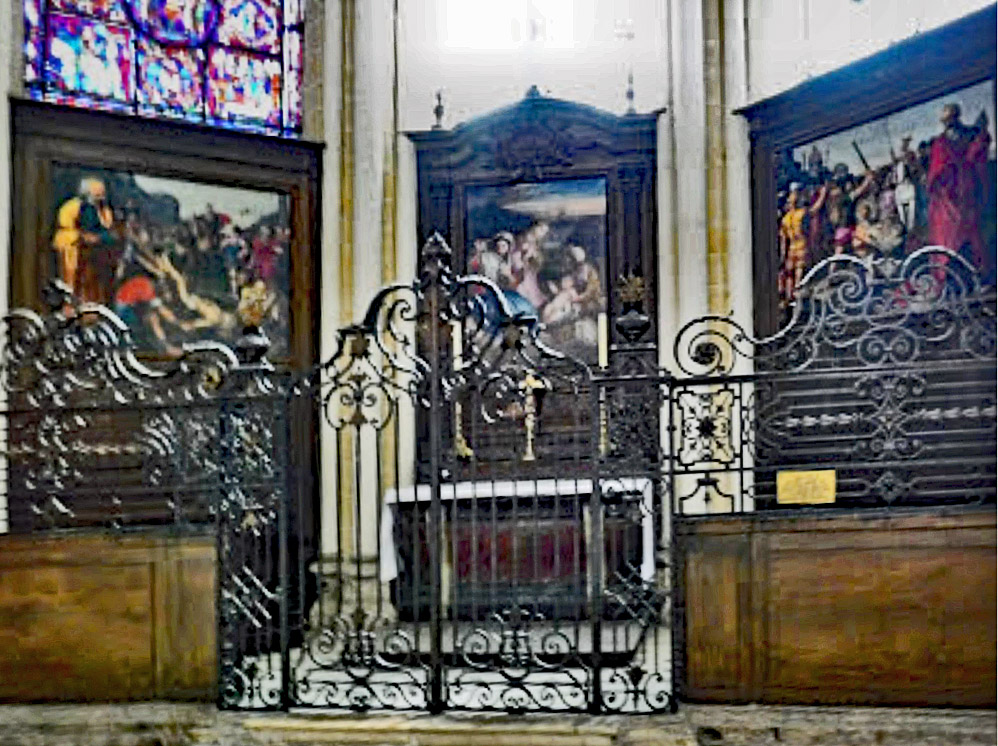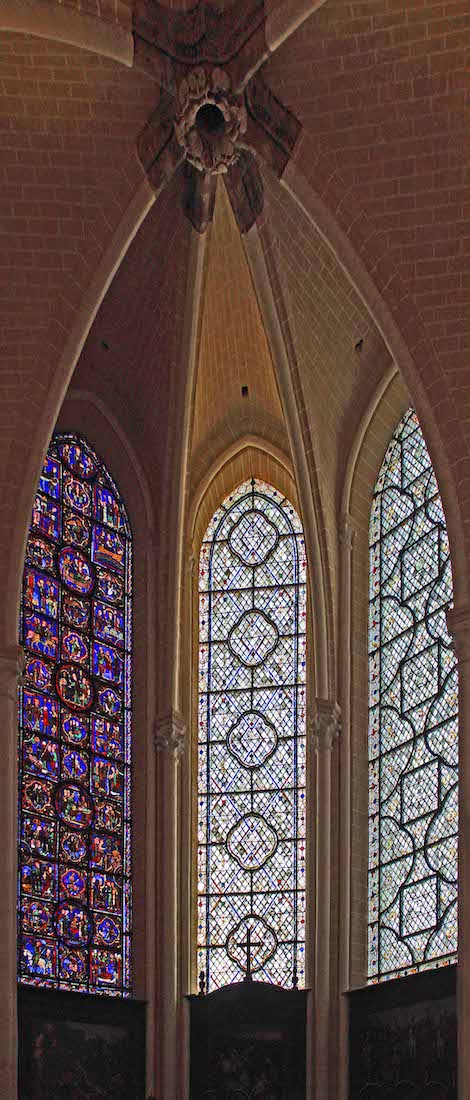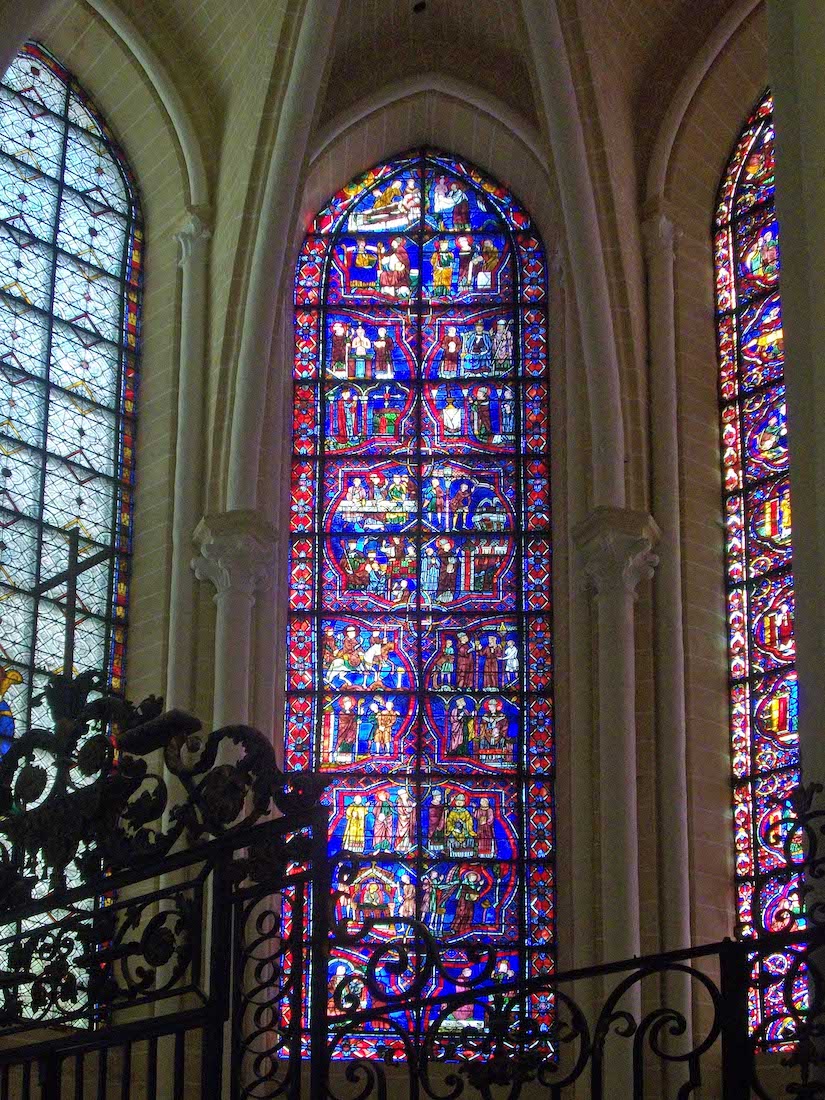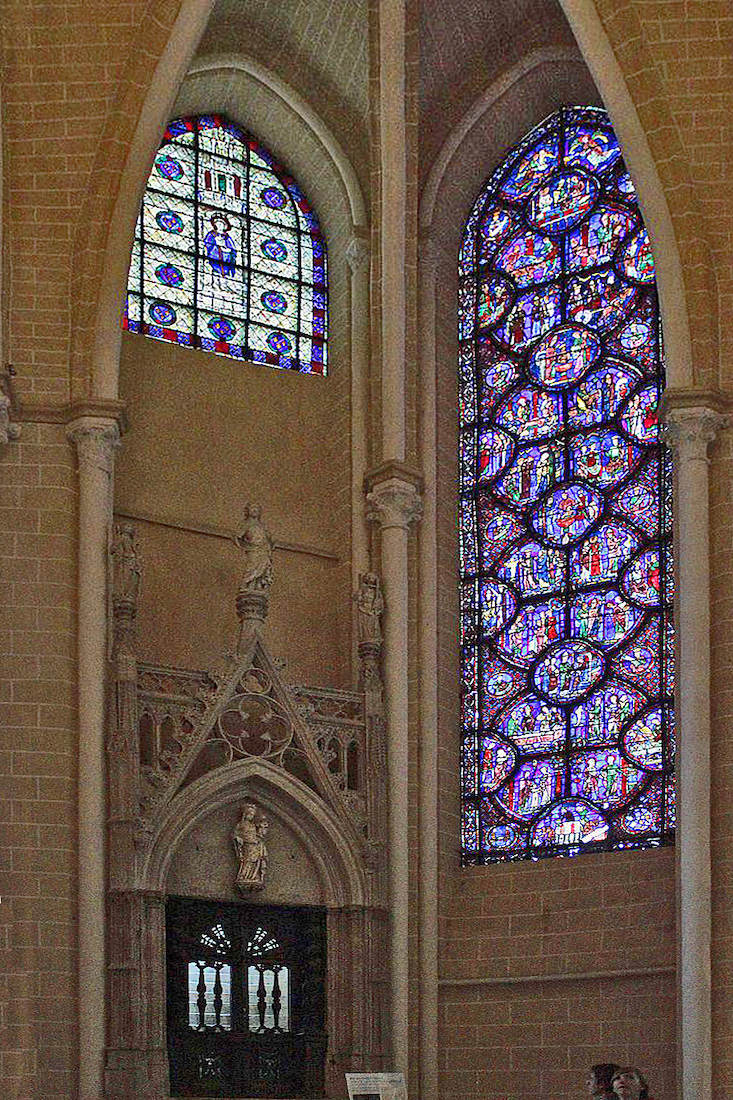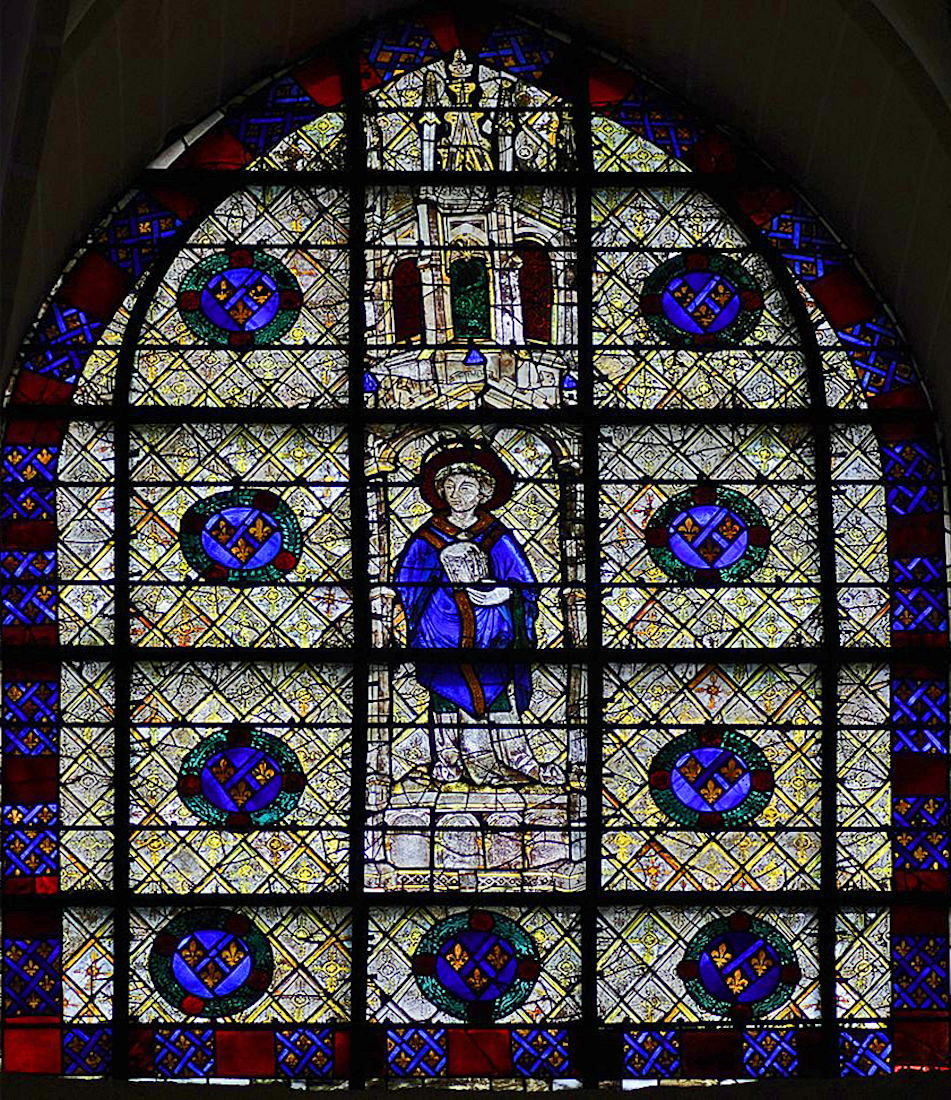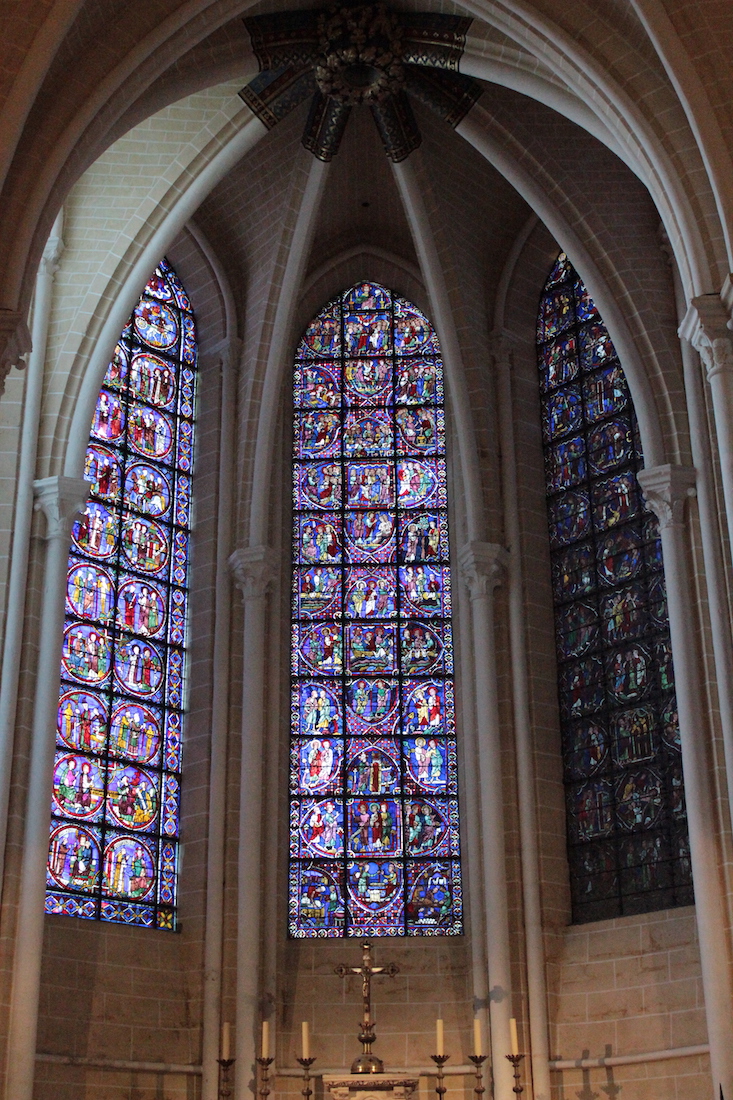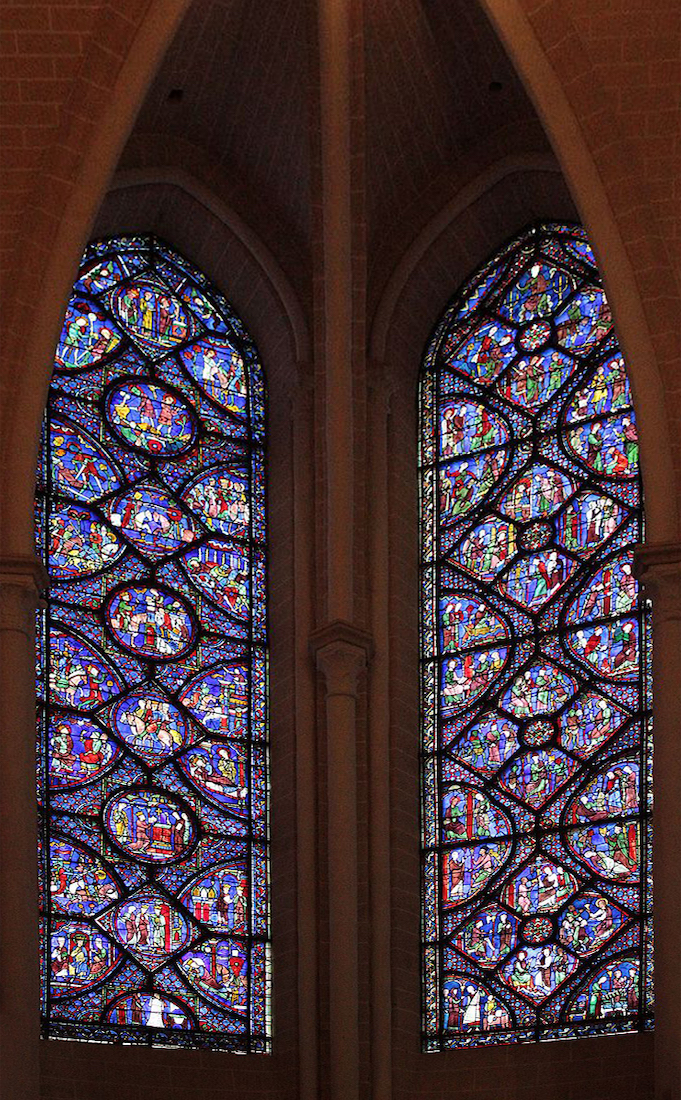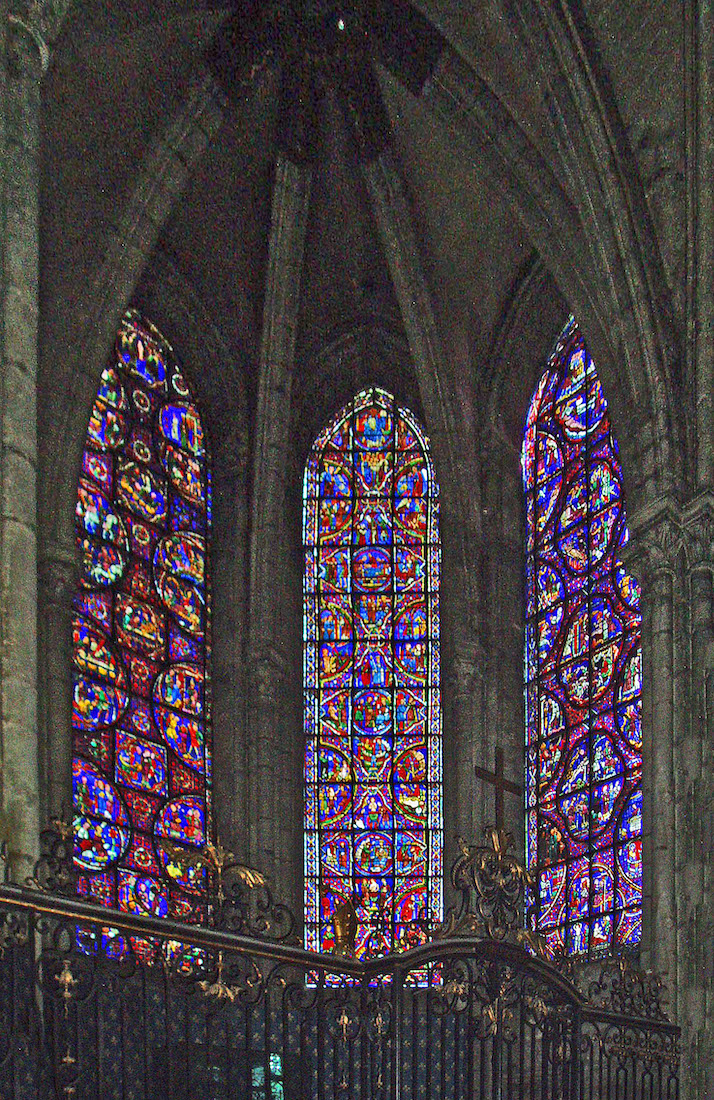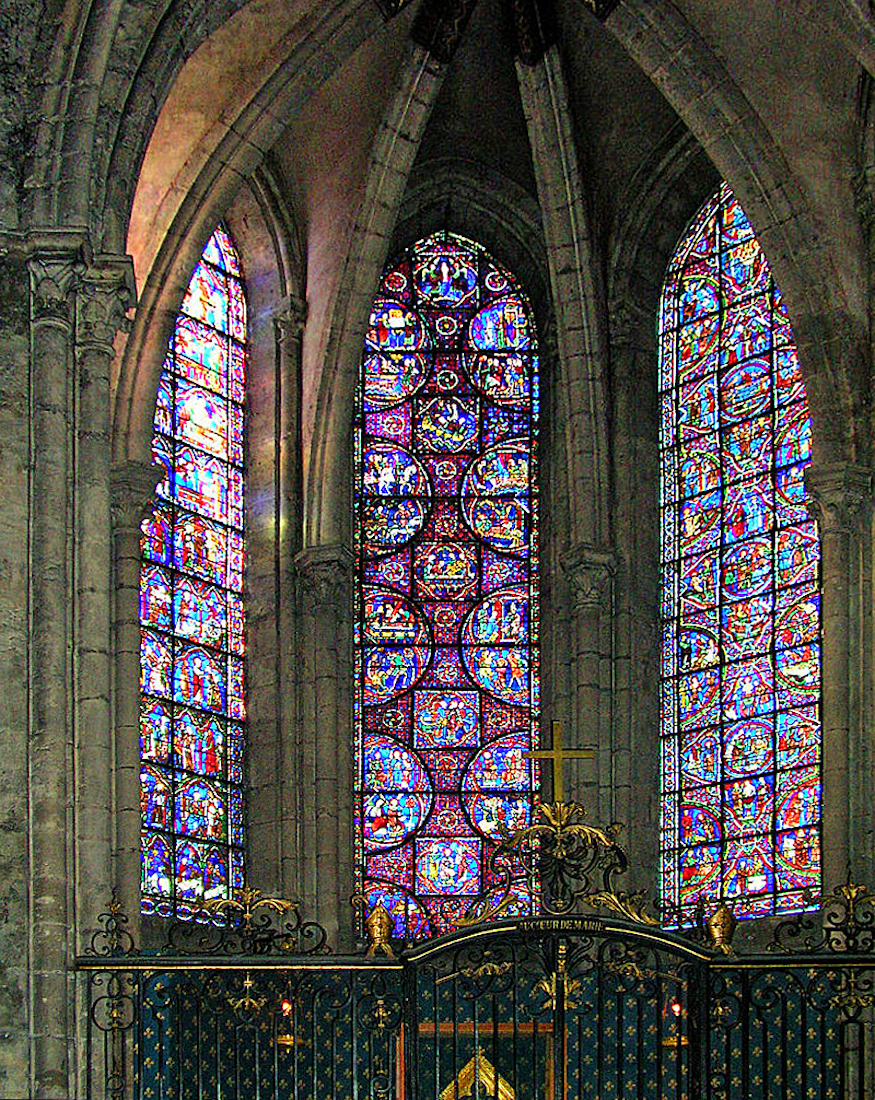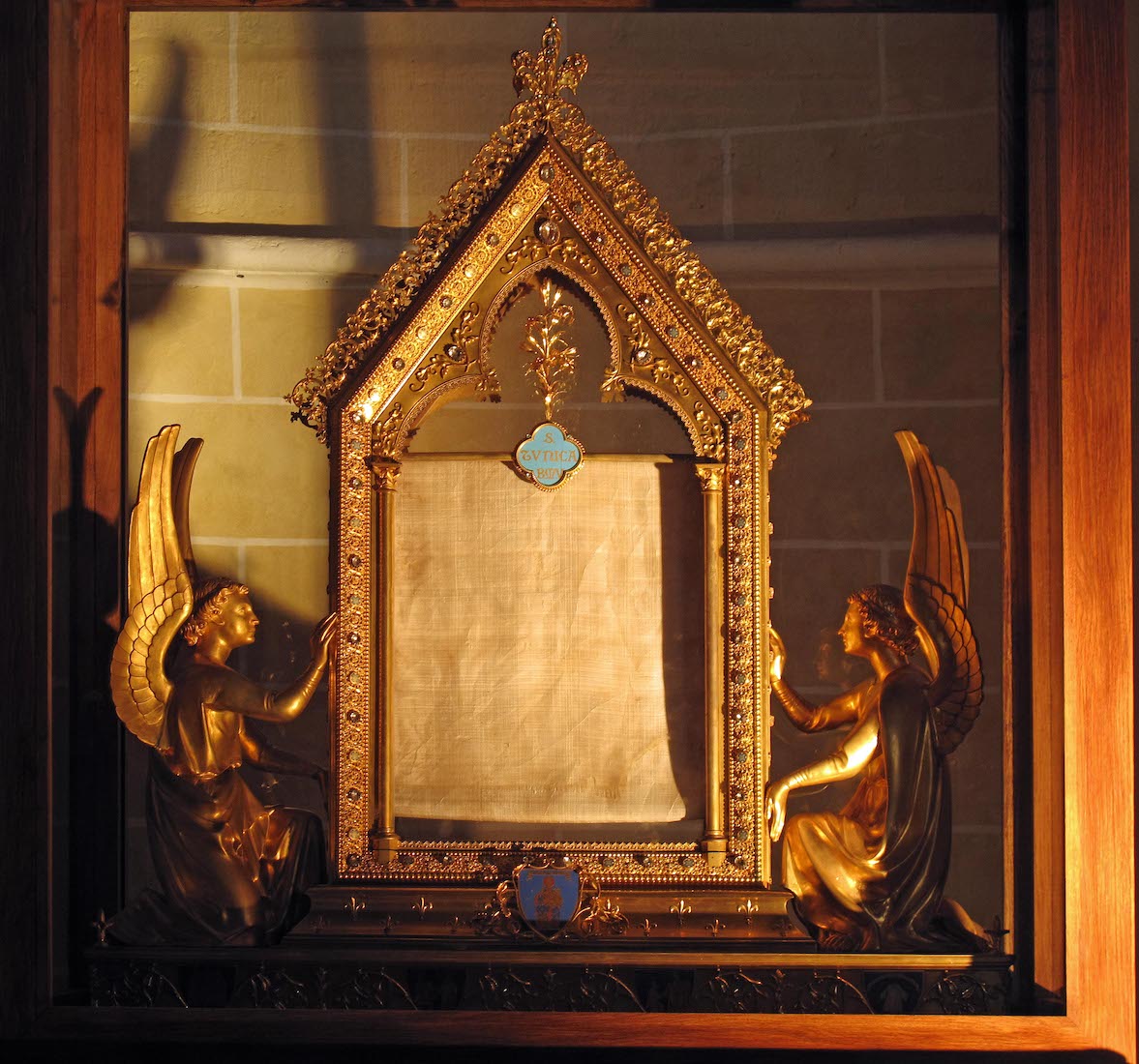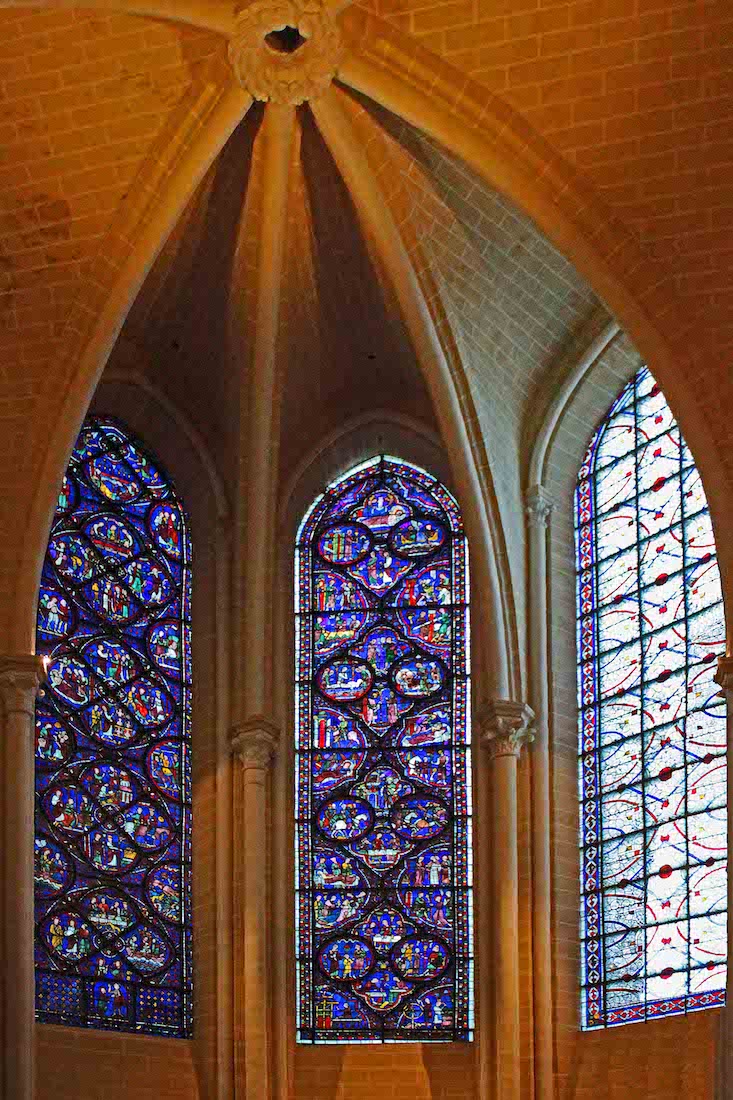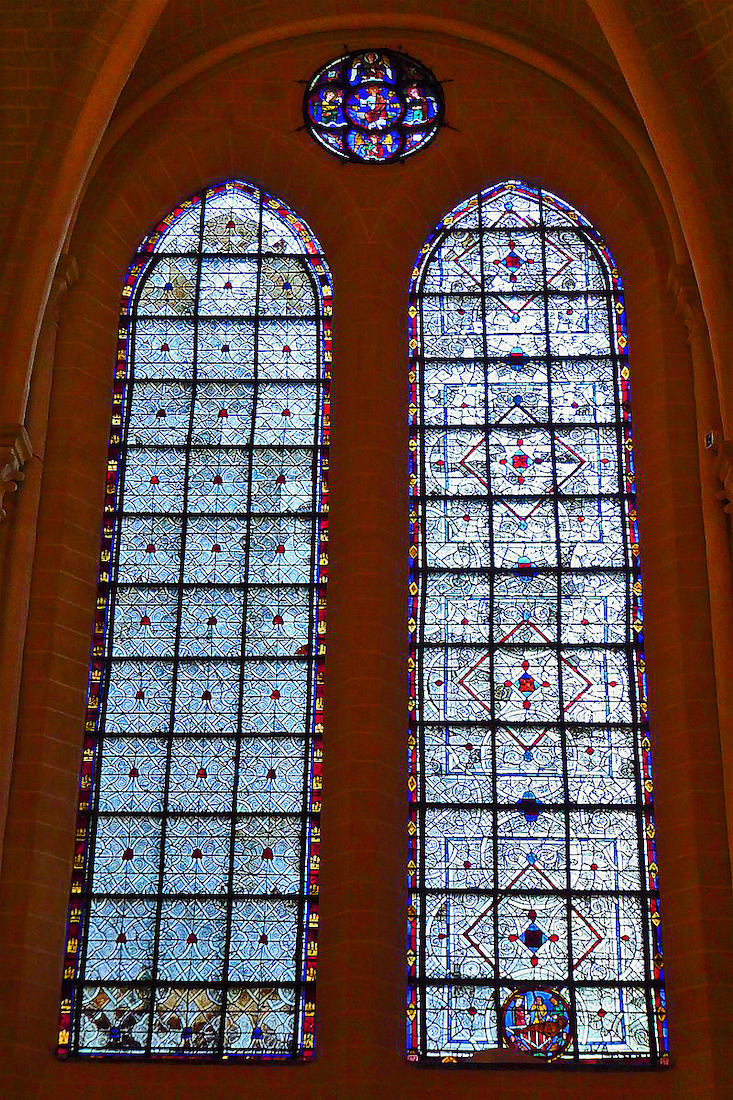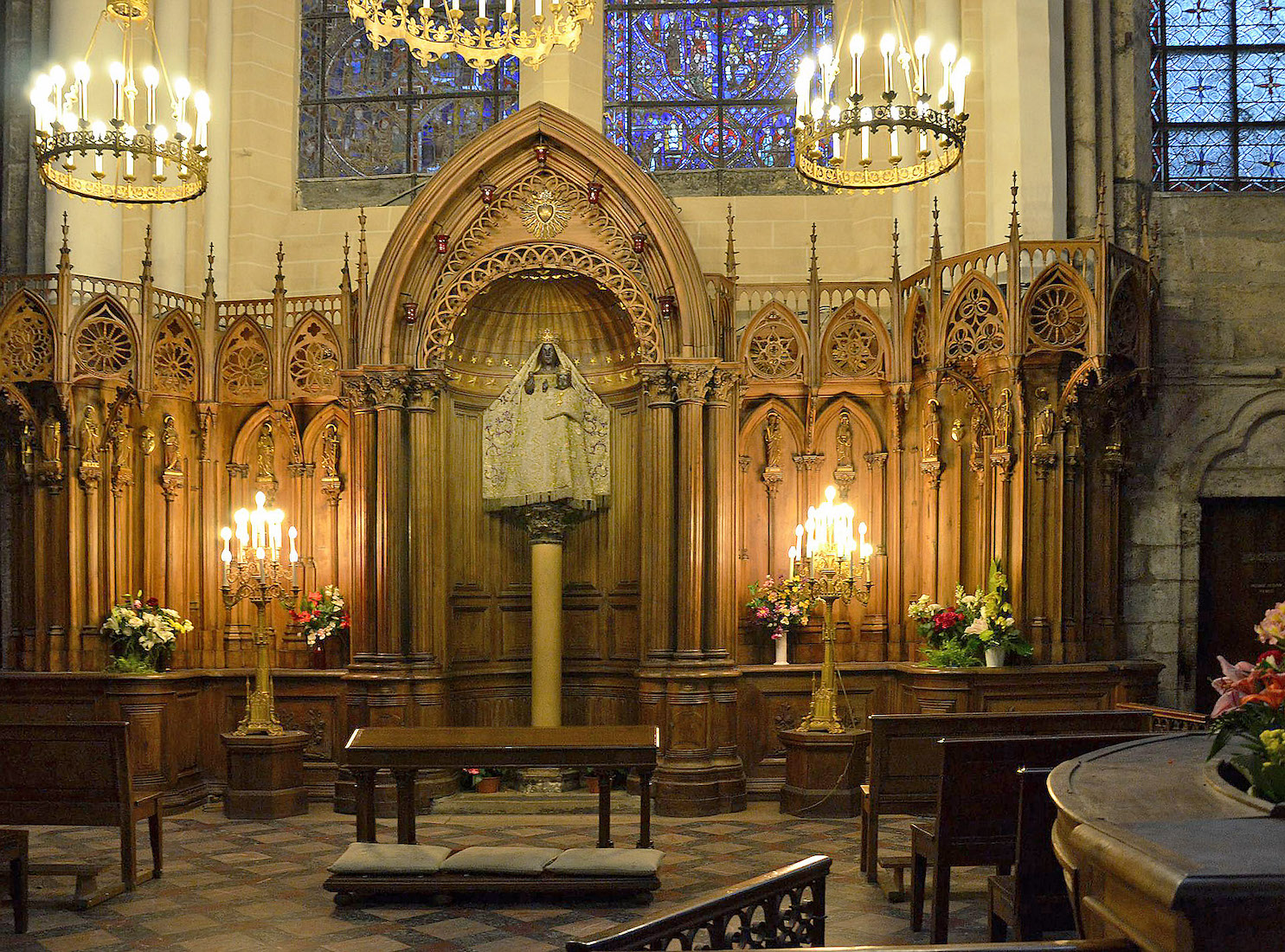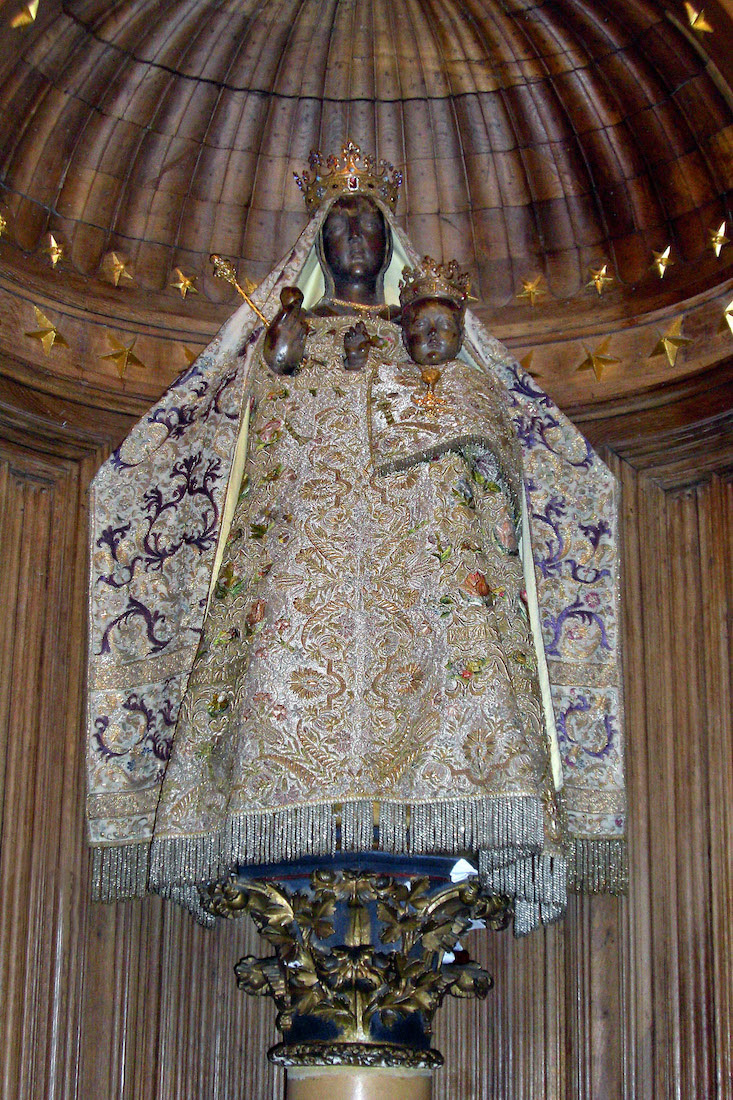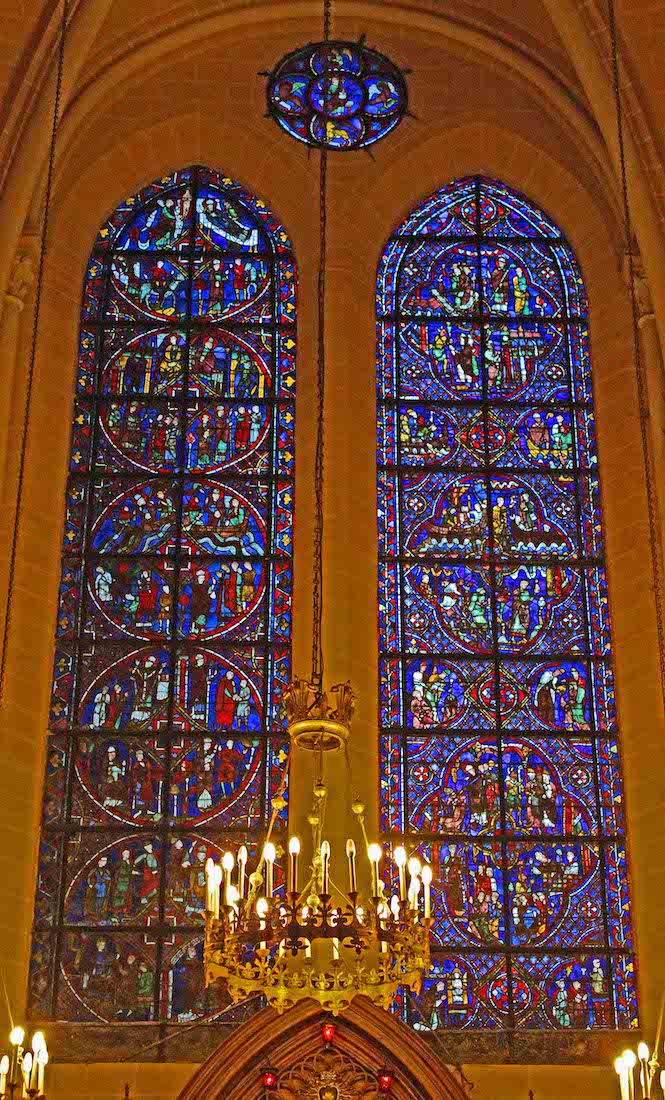AMBULATORY AND CHAPELS
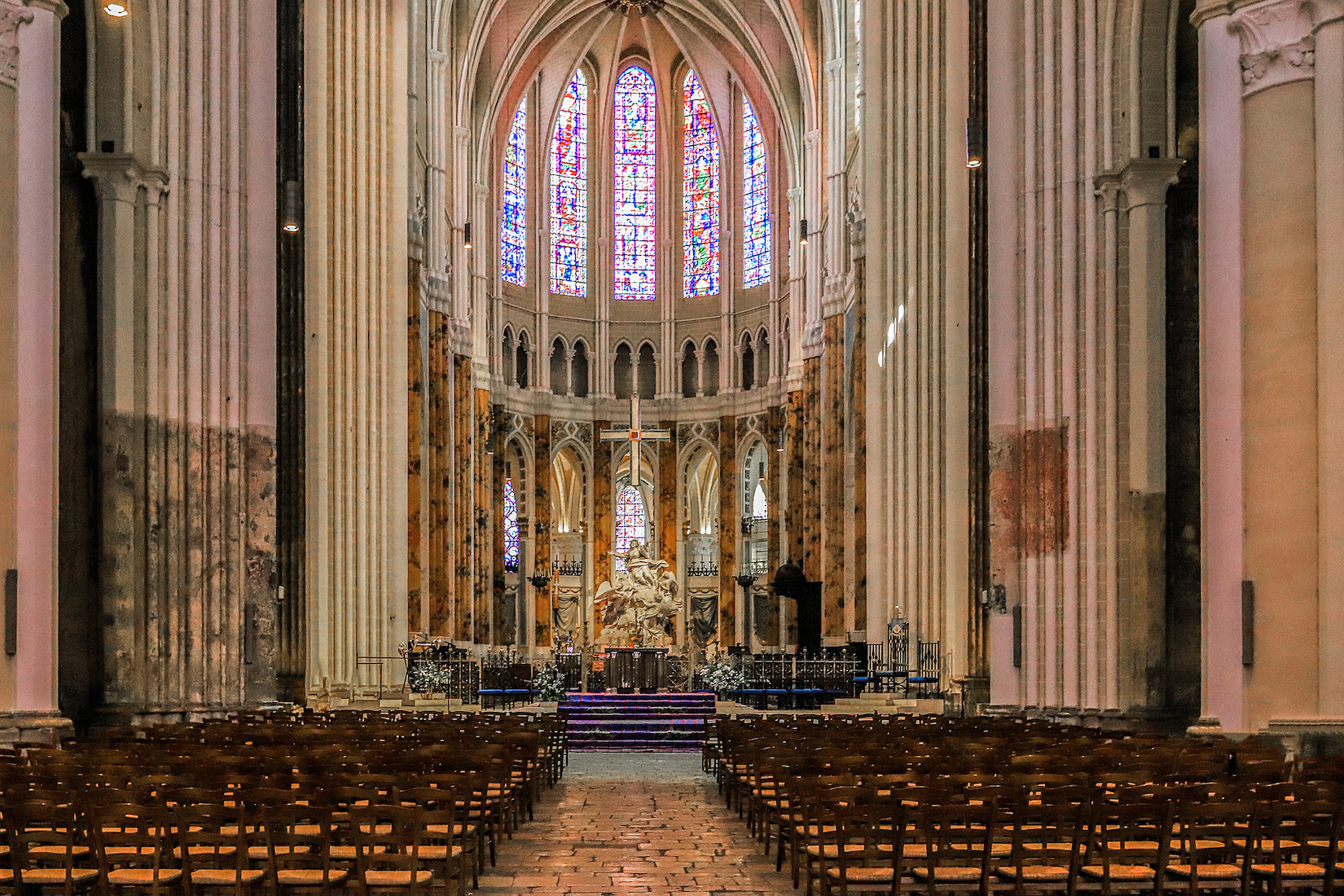
We stand near the front of the nave. Beyond the raised nave altar, the chancel and sanctuary look magnificent. Notice the Choir Pulpit to the right. However, before we look more closely at these, we shall walk around the ambulatory which encircles this area, and which is separated from it. We follow around to the right, the South side. PLAN
A2. SOUTH AMBULATORY AMT **
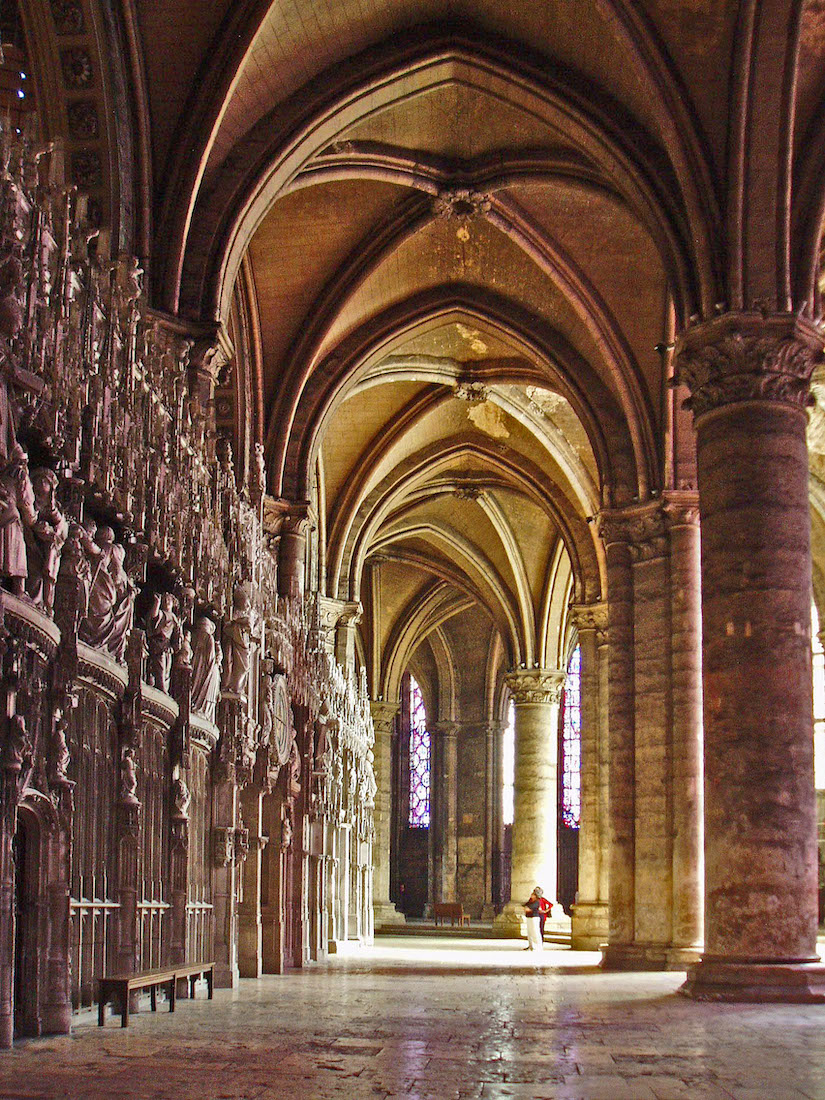
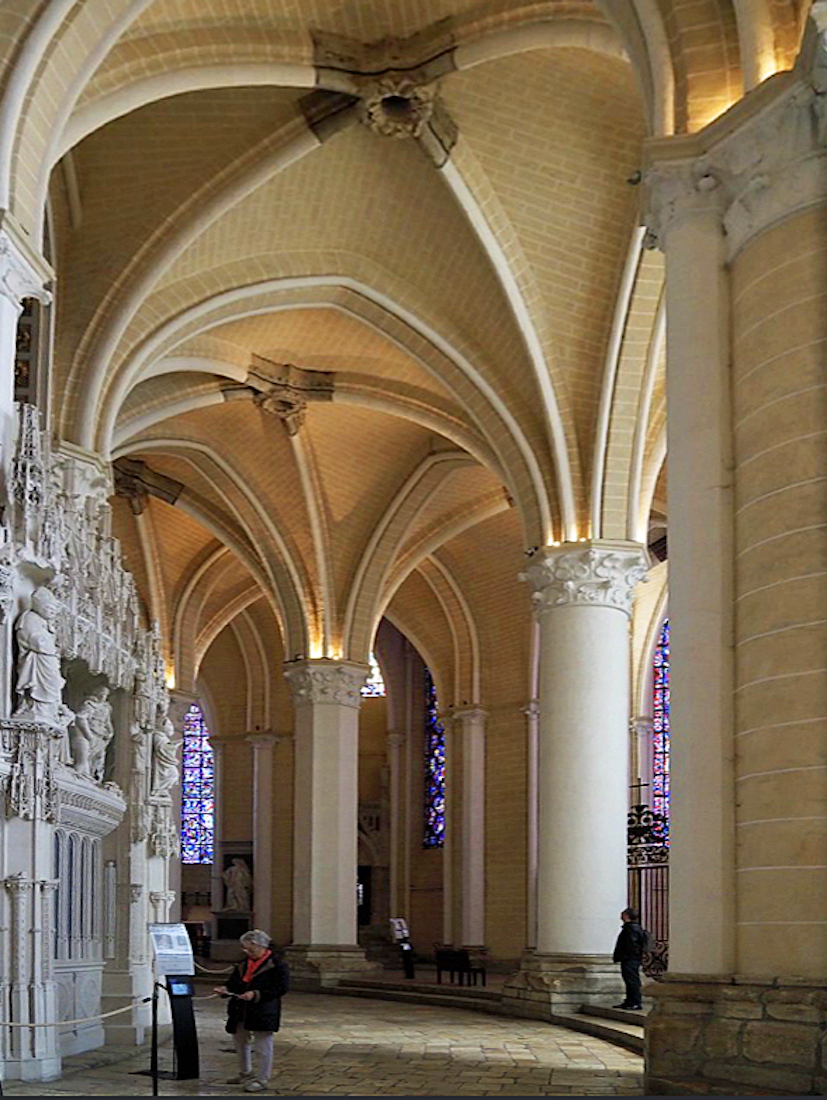
The ambulatory is wide. On our left is the ‘choir wall’, an intricately carved structure which separates sanctuary and ambulatory. To our right we shall find a number of chapels. We begin by looking at the wall. (We use the term ‘choir wall’ rather than ‘choir screen’ as this latter term usually has a different meaning.) [Photo2 Credit: M_Strassar Requested]
A3. CHOIR WALL
The choir wall is over six metres tall and around 100 metres long. Around the top of the wall are some 40 sculpted reliefs of biblical scenes telling the life of Christ, and other scenes from the life of the Virgin Mary. The scenes were sculpted by some of the best artists in France and were commissioned at different times over a 200 year period from 1510 to 1720. The 16th century works are mainly by Jehan Soulas and François Marchand. Thomas Boudin worked on the screen in the early 17th century, and Simon Mazière provided the passion sequence works in the early 18th century. Other artists that worked on the screen were Jean Dedieu, Pierre Legros, and Jean-Baptiste Tuby. [Photo1 Credit :Google Maps-Gael Gehin ; Photo2 Credit: M_Strassar Requested]
A4. CHOIR WALL DETAIL LK
The story sequence of these carvings should be read from the South side. Two entry doors through to the choir have been inserted in the wall. Set in the wall is an astrological clock, 1525-28, by Jehan Texier or Jean de Beauce. This tells the time, the day of the week, the month of the year, the time of sunrise and sunset, the phase of the moon and the current sign of the zodiac. Its inner workings were partially destroyed in 1793 during the French Revolution, and the face and mechanisms have been restored 2006-2010. A detailed Wikipedia description of the sculpture can be found here.
A5. ROUND PULPIT DETAIL
Just past the South access door to the Choir, the wall curves around the pulpit (on the other side). [Photo Credit: Wikipedia-Tango7174]
A6. CHOIR WALL LOOKING WEST
Arriving at the Eastern extremity of the apse, there is a break in the pattern of wall scenes, and we see Christ’s Triumphal Entry into Jerusalem.
A7. NORTH CHOIR WALL
Moving around to the North side of the Choir Wall, we come to the darker side of the life of Christ with his trial and crucifixion. It is an amazing set of carved sculptures. We can see a cut-off line with the sculpture at left being cleaned, and the sculpture at right yet to be treated. Further sculptures on the North side had yet to be cleaned at the time of this visit. [Photo Credit: Wikimedia-Marianne Casamance] Some more details of the Choir Wall can be found here.
A8. SOUTH AMBULATORY
We now return to our starting point at the beginning of the South ambulatory, and with our backs to the Choir Wall, look at the various altars and chapels on the outer wall. How wide this ambulatory is! Three anonymous altars, and some more wonderful stained glass. The window at left is another of the grisaille type. Among glass painters, grisaille is the name of a gray, vitreous pigment used in the art of colouring glass for stained glass. The window at right is the Blue Virgin window. The four central panels are amongst the oldest in the Cathedral, dating from around 1150. The window owes its fame to the exceptional cobalt blue. [Photo1 Credit: Google Maps-Gael Gehin; Photo2 Credit: Wikipedia-Vassil]
A9. CHAPEL 1 : ALL SAINTS CHAPEL •• Mtb
The seven apsidal chapels were constructed between 1194 and 1220CE. The first of these chapels is the All Saints Chapel. The window at left features scenes from the Life of St Martin and dates from 1215–1225. The two Grisaille windows are of a later date – 16th century with 13th century elements. [Photo2 Credit: Becky-From Paris with Love]
A10. CHAPEL 2 : CONFESSORS’ CHAPEL
The Confessors’ Chapel is rather larger with five windows. The left window is a grisaille window, the remaining four stained glass. The grisaille window has an added fragment of St Nicholas resurrecting three children. [Photo Credit: Wikipedia-Fab5669]
A11. CHAPEL 2 WINDOWS Mtb (x4)
The four remaining windows in this chapel feature: • Life of St Remigius; • Life and Miracles of St Nicholas; • Lives of St Margaret and St Catherine; • Life of St Thomas Becket. •• Remigius (c. 437 – 533), was the Bishop of Reims and "Apostle of the Franks". On 25 December 496 he baptised Clovis I, King of the Franks. This baptism, leading to about 3000 additional converts, was an important event in the Christianization of the Franks.
A12. CHAPEL 3 : ENTRANCE TO THE ST PIATUS CHAPEL Mtb
The next chapel is more of a foyer than a chapel. A double pair of doors leads to stairs to the Chapel of St Piatus of Tournai. This Chapel was a later addition to the cathedral, built in 1326. It contained a collection of reputed relics from the saint, who was bishop of Tournai in modern-day Belgium in the third century, and was martyred by the Romans, who cut off the top of his skull. He is depicted in stained glass and culture holding the fragment of his skull in his hands. The chapel has a flat chevet and two circular towers. Inside are four bays, in a harmonious style, since it was built all at the same time. It contains a notable collection of 14th-century stained glass. The lower floor was used as a chapter house, or meeting place for official functions, and the top floor was connected to the cathedral by an open stairway.
A13. CHAPEL 3 WINDOWS Mtb Mtb
The grisaille window at left shows St Piatus holding a book, standing on a plinth and under a canopy. The tall window at right tells of the life of St Sylvester. St. Sylvester I was born in Rome, and —died in Rome in 335. He was pope from 314 to 335, and his long pontificate saw the beginnings of the Christian Roman Empire.
A14. CHAPEL 4 : CHAPEL OF THE APOSTLES Mtb **
The Chapel of the Apostles is a large chapel on the axis of the cathedral. It has a simple altar with a crucifix and six candles. It has five windows including a grisaille window at left. The two windows at right are darkened because of the proximity of the Chapel of St Piatus. [Photo2 Credit: Wikimedia-Chabe01]
A15. THREE WINDOWS OF CHAPEL 4 ** Mtb Mtb
Here are good views of the grisaille window (13th century), Lives of St Andrew and St Jude (1220–1225) and a History of the Apostles (1210–1225). All the windows have had some restoration. Not shown here are the windows showing the Life of St Andrew, and the Life of St Paul. [Photo1 Credit: Wikipedia-Le Passant]
A16. CHAPEL 5 : SIDE CHAPEL Mtb
The next little side chapel has windows showing scenes from the Life of Charlemagne, and the Life of St James the Great.
A17. CHAPEL 6 : MARTYRS’ CHAPEL AMT Mtb
These two views show four of the five windows of the Martyrs’ Chapel. From left we have windows showing scenes from The Life of St Savinian and St Polentian, the Life of St Chéron, the Life of St Stephen, and the Life of St Pantaleon. All these windows date from 1220 – 1225. Now shown is the right window depicting the Life of St Theodore and St Vincent. This Chapel is famous for something else ... . [Photo2: Wikipedia]
A18. FRAGMENT OF VEIL
The Veil of Mary (Sancta Camisa) is an oblong piece of silk that Mary is reported to have worn during the Annunciation of Jesus’ birth by the angel Gabriel, and/or during her labor and delivery of Jesus. King Charles the Bald gave the veil to the Chartres Cathedral in 876. His grandfather, Charlemagne, had received it as a gift from the Byzantine Empress Irene. When tested in the twentieth century, the cloth contained pollen from first-century Palestine. This piece of cloth is closely tied to the history of both Chartres Cathedral and the town of Chartres. [Photo Credit: Wikipedia-Rama]
A19. CHAPEL 7 : SIDE CHAPEL Mtb
We come now to the last of the seven apsidal chapels. This chapel has three windows. From left: the Life of St Thomas the Apostle, the Life of St Julian the Hospitaller, and a Grisaille window. The detail at right is from the Life of St Thomas. [Photo Credit: Wikimedia-MOSSOT]
A20. DECORATIVE GRISAILLE WINDOW
We complete our exploration of the ambulatory by walking back along the North side past two (double)decorative grisaille windows, one of which is shown here (Bay 25). [Photo Credit: Wikipedia-Le Passant]
A21. CHAPEL OF OUR LADY OF THE PILLAR
Our final chapel is the beautiful Chapel of Our Lady of the Pillar, with a statue of the Virgin Mary. The polychrome pear wood statue dates back to the first quarter of the 16th century. Mary's crown was added during the papacy of Pius IX in 1855. The statue was put down in the crypt during the French revolution and was returned back to its current place in 1806. [Photo Credit: Wikipedia-Marianne Casamance]
A22. BLACK MADONNA AND WINDOW LK Mtb
The 2016 restoration of the Cathedral has caused some controversy. Over its lifetime the Cathedral has been darkened from smoke from burning candles, oil lamps and fires. In the cleaning of the Cathedral the skin of ‘the Black Madonna’ has now been considerably lightened. • The Chapel has a two lancet window. The left lancet shows the Life of St Germanus of Auxerre, and at right are the Miracles of St Nicholas. • We now walk back to the Chancel and Sanctuary.


